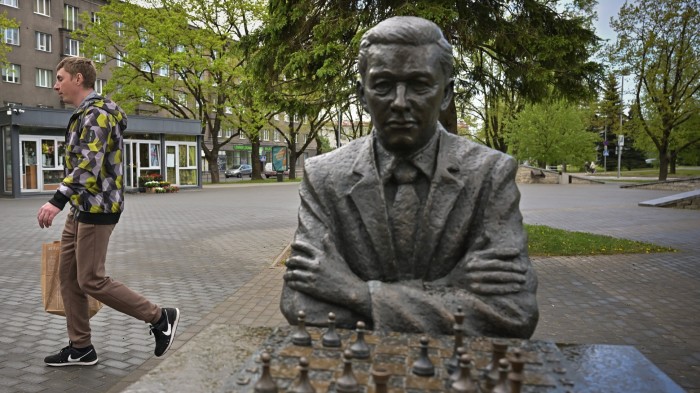Chess: Memories of the legendary Paul Keres

Paul Keres (1916-1975) was my chess hero in my distant youth. The elegant Estonian, who triumphed at Avro 1938 in a historic tournament of the world top eight, played in a classical style with tactical bursts and was widely viewed as the likely successor as champion to the ageing Alexander Alekhine.
Then came the second world war, when Keres’s career became perilous as he played in both Soviet and Nazi tournaments and made an unsuccessful attempt to evacuate his family to neutral Sweden. He narrowly escaped a death sentence, and had to promise not to derail Mikhail Botvinnik’s title campaign. At the 1948 world championship, Keres lost his first four games to his rival as critics pointed out an elementary error in a rook ending, which was normally one of his specialties.
The positive was that from the early 1950s he was again able to travel twice a year to western tournaments, where he could relax among colleagues.
If the ship captain who was meant to transport Keres and other high level Estonians to safety in 1944 had docked at Haapsalu as planned, would he have become world champion? A difficult question with no clear answer but the fate of Viktor Korchnoi, who defected in 1976 and was treated as a non-person by the USSR for many years, offers a clue.
Boris Spassky, who knew Keres well, thought that to reach the top you have to think solely of the goal and forget about everything else and that was something the multi-cultured Keres could not do. He went close in five Candidates tournaments, but faltered at critical moments.
His brilliant attack against Efim Geller was one of his best. He is a national hero like no other chess player. His final game, which gave him first prize at Vancouver 1975 before his fatal heart attack on the way home, was an outstanding defensive performance.
The final position of the Walter Browne game is shown on the statue of Keres in his home city of Narva. His state funeral was attended by 100,000 people, while the Keres Chess House in Tallinn remains open to this day.
He was voted Estonia’s sportsperson of the year in 1959 and later 1962, and later sportsperson of the 20th century. In 2016, Estonia’s national bank issued coins with Keres’s name and portrait to commemorate his centenary.
Puzzle 2552

Keres v Laszlo Szabo, Budapest 1955. White to move and win. How did Keres defeat the top Hungarian player of his time?
Click here for solution
Comments